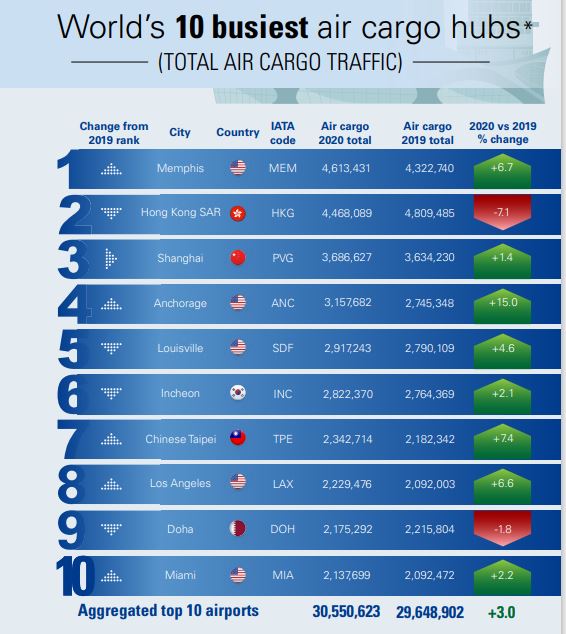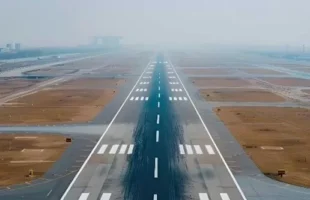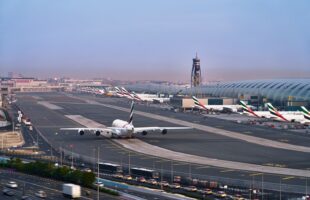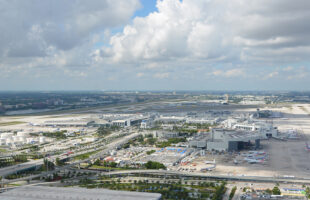

New airport traffic rankings showed the dramatic impact of Covid-19 on different economies.
In its preliminary world airport traffic data, Airports Council International (ACI) World saw global passenger traffic at the world’s 10 busiest airports fall 45.7 percent, whilst overall traffic dropped 64.6 percent in 2020, a year that saw a pandemic bring aviation to a virtual standstill.
A shakeup in the top airports for passenger traffic seems to reveal the uneven impact of the pandemic and the early stages of recovery in air travel. Airports in countries that have prioritised vaccinations and recovered earlier made it to the top 10.
“Seven of the top 10 airports for passenger traffic are in China with three in the United States. In most cases, domestic air travel is beginning a modest rebound while international air travel remains depressed because of on-going travel restrictions. For example, Hongqiao International Airport (SHA) in China has moved from 46th position in 2019 to the 9th in 2020, illustrating the uneven nature of the impact of, and recovery from, the pandemic across the world,” ACI stated.
Guangzhou Bai Yun International Airport (CAN) in China recorded the most passenger traffic in 2020, with Atlanta Hartsfield-Jackson International Airport in the United States following behind.
Also read: ACI Asia-Pacific welcomes new board directors and airports
On the cargo front, Memphis International Airport (MEM) edged out Hong Kong International Airport (HKG) as the busiest air cargo hub. MEM saw demand increase 6.7 percent last year, whilst HKG recorded a 7.1 percent drop in volume.
Compared to the passenger side, air cargo was less impacted by the pandemic, ACI noted, with volumes slipping only 8.9 percent to around 109 million metric tonnes in 2020, almost similar to the 110 million metric tonnes in 2016.
Cargo volumes in the top 10 airports climbed 3 percent last year, on the back of growing demand for online consumer goods, pharmaceutical products and personal protective equipment. These airports logged 30.6 million metric tonnes or 28 percent of the global volumes in 2020.
In Asia, HKG slipped to the second spot, whilst Shanghai Pudong International Airport (PVG) stayed in third. Incheon Airport (INC) meanwhile slipped to the fifth spot as Taoyuan International Airport (TPE) moved to 6th.

ACI World estimates 58 million global aircraft movements in 2020, representing a 43 percent drop from 2019. The top 10 airports represent 7 percent of global traffic (or 4.2 million movements) and experienced a drop of 34.3 percent compared to 2019.
For airports, the trade association explained that revenues are tightly correlated to traffic levels but, like many other capital-intensive businesses, a large proportion of costs remain largely fixed and do not fall at the same level as traffic throughput and revenues during the crisis, adding that even with reduced operations, the closure of terminals and staff layoffs, this imbalance remains.
“There is no denying the current economic realities – and the financial shortfall they create – that airports face,” ACI World Director General Luis Felipe de Oliveira said. “Airports are economic generators, bringing socio-economic benefits and jobs to the communities they serve, and governments need to provide the necessary financial alleviation and assistance to suit local circumstances.
“Airport operators also continue to work closely with their airline partners and other stakeholders in balancing the current market realities with the cost of providing the infrastructure as they navigate the crisis together.”









